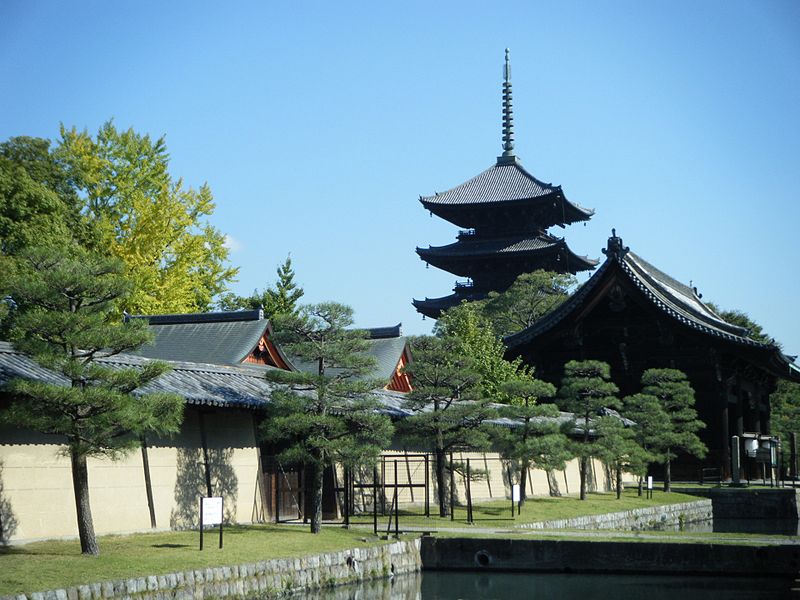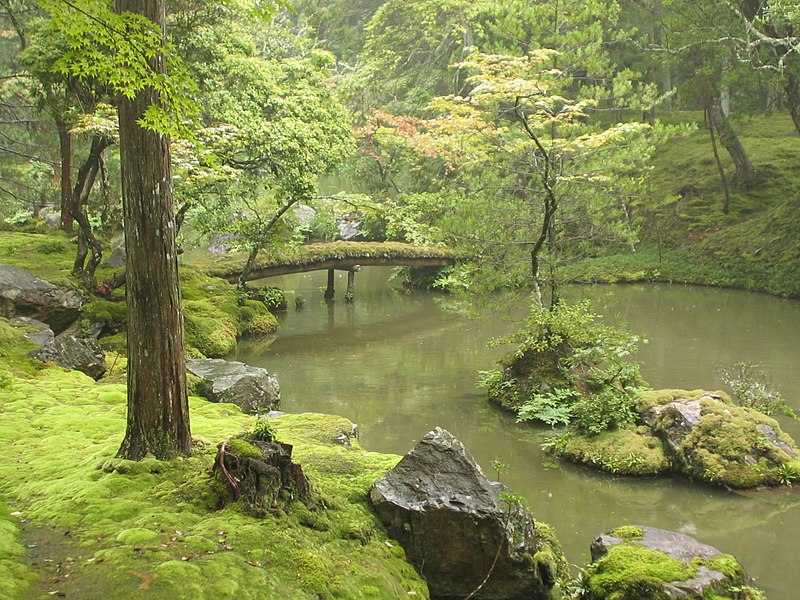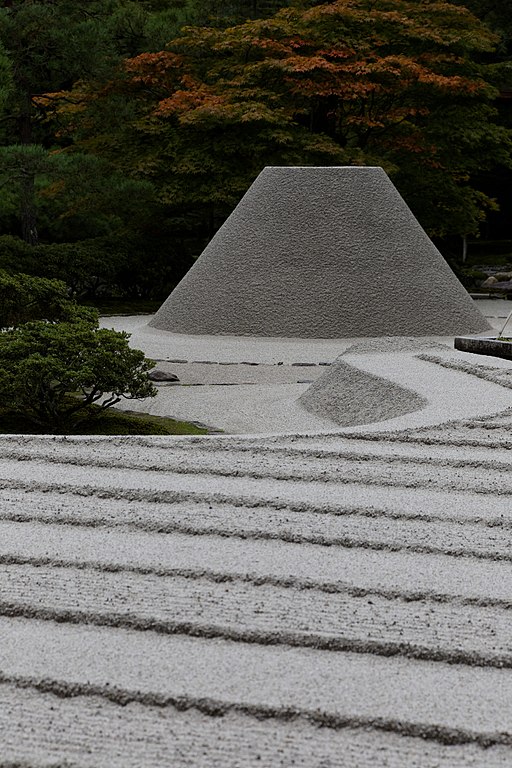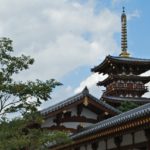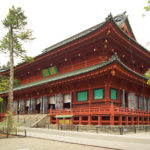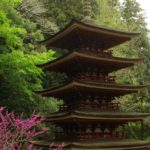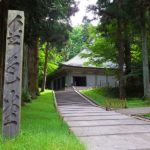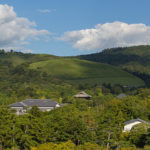Table of Contents
The temples in the traditional city, Kyoto
Kyoto, one of the most traditional and historical cities in Japan, attracts more than 80 million people in a year. The city had assumed a role of an administrative function since 794. With the beginning of Heian Period, many people moved from Nara(Heijo-kyo) to Kyoto(Heian-kyo, 平安京) and from that time, they built temples in the new capital.
Sponsored Links
Click! Learn more about the temples in Nara
Many Buddhism sects and temples had been established and some of them became to have a great influence on people and the leaders. The monks occationally took up arms for protesting the governments when they felt so dissatisfied with the policies.
But the temples in Kyoto as much as Nara faced many fires of accidents and wars including burning Enryakuji by Oda Nobunaga(織田信長) in 1571. Repeating the destruction and the reconstruction, the temples remain and show us the figures.
Click! Learn more about Japanese temples
Toji Temple/Kyoo-Gokokuji (東寺/教王護国寺)
Toji, the correct name is Kyoo-Gokokuji, means “eastern temple” in Japanese because it was built for guarding the east side of the nation in 796. So there was also “Saiji”(western temple), but the temple has been lost more than 400 years ago. The structures of Toji were rebuilt in each period.
In 823, Emperor Saga(嵯峨天皇) bestowed Toji on Kukai(空海), who established Shingon-sect(真言宗) and Koyasan(高野山). The symbolic tower, five-story pagoda, in the temple is 55 meter and was reconstructed by Tokugawa Iemitsu(徳川家光) in 1644.
In the auditorium, the Buddha statues of Dainichi-nyorai and five Myoo are placed. And a lot of cultural assets of esoteric Shingon Buddhism are kept in the treasure house. You can see the properties from March 20 to May 25, or from September 20 to November 25.
Click! Learn more about “Nyorai”
Daigoji temple(醍醐寺)
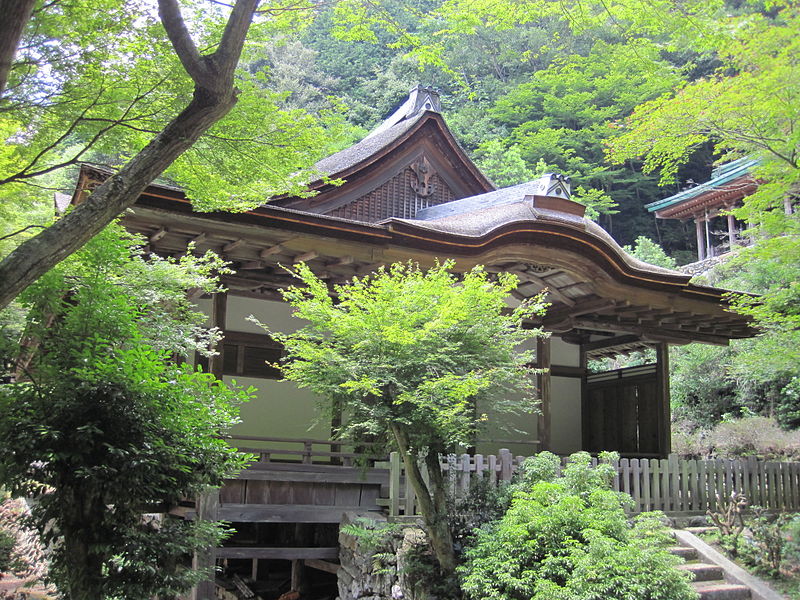
Daigoji was established by Rigen Daishi(理源大師, monk Shoho), who was the disciple of Kukai’s disciple, in 874. He was inspired by a local god that he could discover a well of holy and spiritual water on the top of the Daigo mountain.
He found the well where just the god told him and placed Buddha statues of Juntei and Nyoirin kannon there to show his gratitude.
Most of the structures had been rebuilt since Momoyama Period, but the five-story pagoda was made in 952. Today, it is famous for Sanpoin garden(三方院庭園) as the historic site/special historic site and the place of scenic beauty. A lot of people visit the garden to see the cherry blossoms in spring and red or yellow leaves in autumn.
Enryakuji temple(延暦寺)
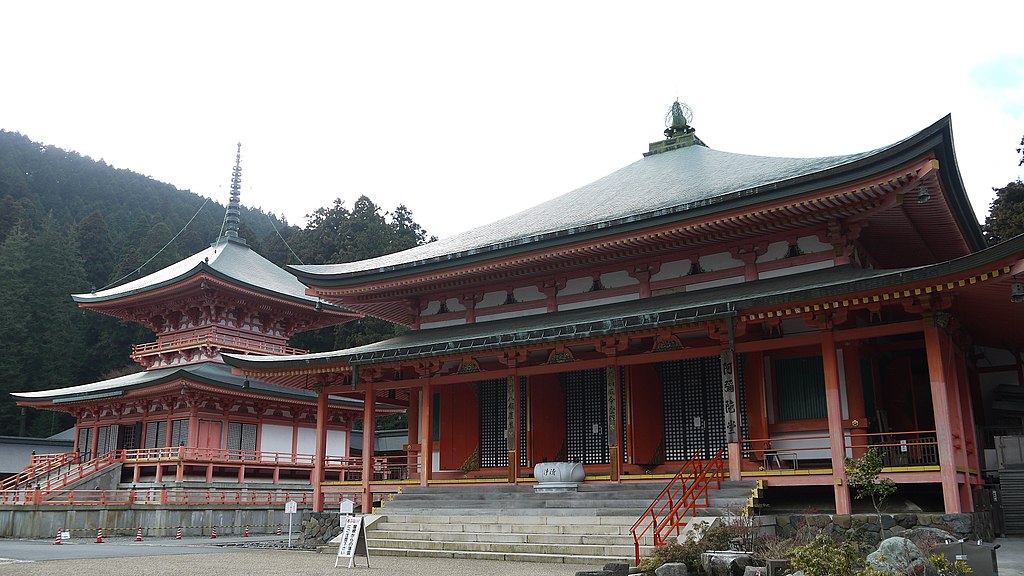
In 788, Saicho(最澄), who began Tendai sect Buddhism(天台宗), built the main hall for Yakushi nyorai on Hieizan. It is the origin of Enryakuji. He framed a system of studying for Buddhism in 12 years. Especially, the high priests in Kamakura Period including Honen(法然), Shinran(親鸞), Dogen(道元), Eisai(栄西), and Ippen(一遍) received the teaching of Buddhism.
But the temple was burnt all of the mountains by Oda Nobunaga because the monks sheltered his enemies. After he dead, Toyotomi Hideyoshi(豊臣秀吉), Nobunaga’s servant, ordered to construct the structures again.
The area of Enryakuji is divided into three, the east pagoda, the west pagoda, and Yokokawa.
Kiyomizu-dera(清水寺)
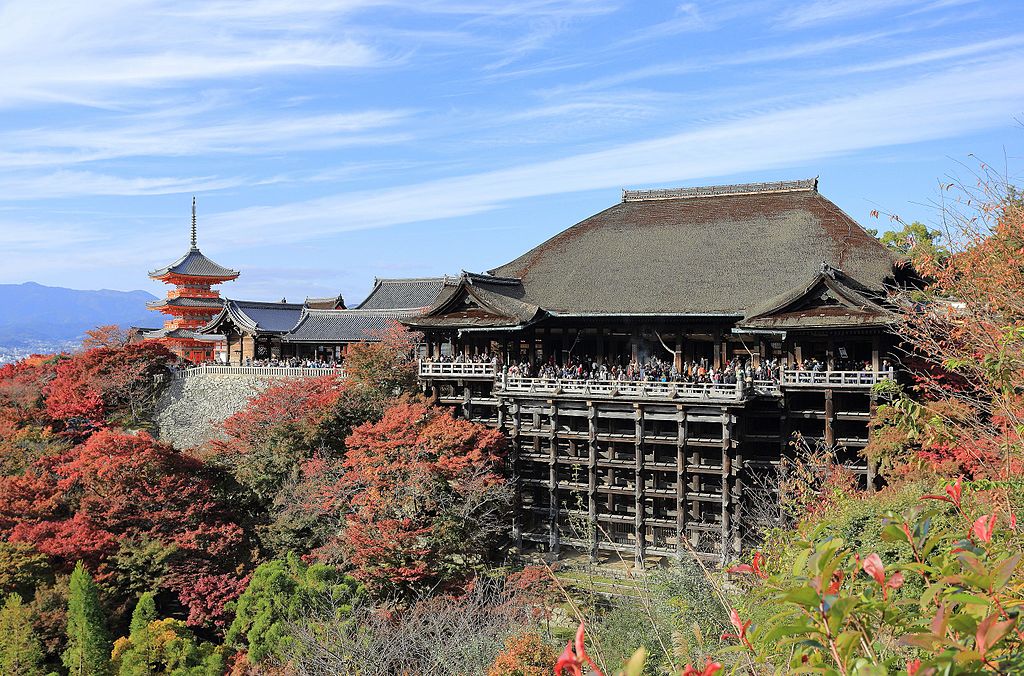
When you try to do some drastic action, you can say that “like a jumping out the stage of Kiyomizu”. The height is 12 meter and the phrase is an idiom to express an enthusiasm. But actually, 234 people leaped from the stage in Edo Period for Buddhist prayer and 34 were dead.
Today, Kiyomizu-dera is one of the most popular site for tourist in Kyoto. The temple began in 778 by monk Enchin(延鎮) and it is said Sakanoueno Tamuramaro(坂上田村麻呂) built the hall of Buddha statue in 798. There are around 30 structures and the main hall(the stage of Kiyomizu) , which was rebuilt by Tokugawa Iemitsu in 1633, contains the Buddha statue of Juichimen-Senju kannon.
Kiyomizu means “clean water” in Japanese. You can drink blessing water from “Otowano-taki”(音羽の滝), the three small stream flow down over the head.
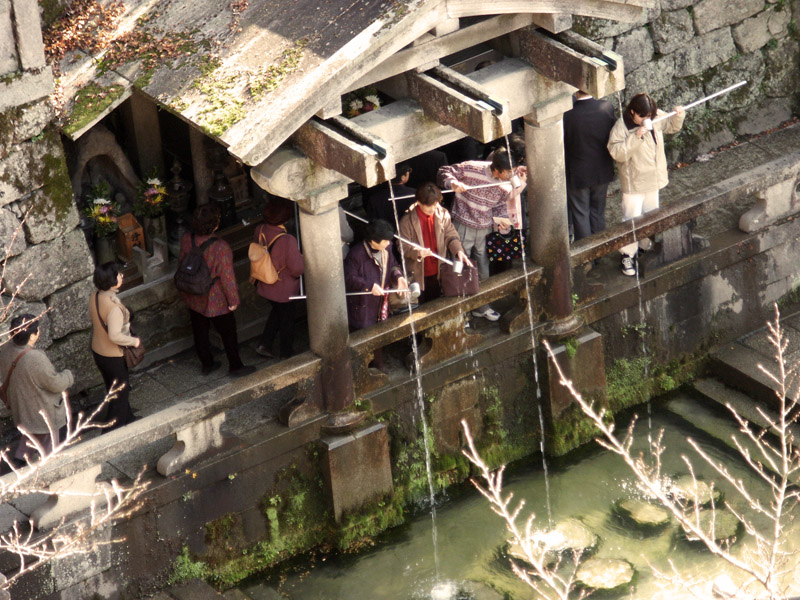
From left to right, you can obtain the blessing of academic achievement, fulfillment in love, and health and longevity. But remember! Don’t drink more than one water or swig. Grasp all, lose all.
Byodoin (平等院)
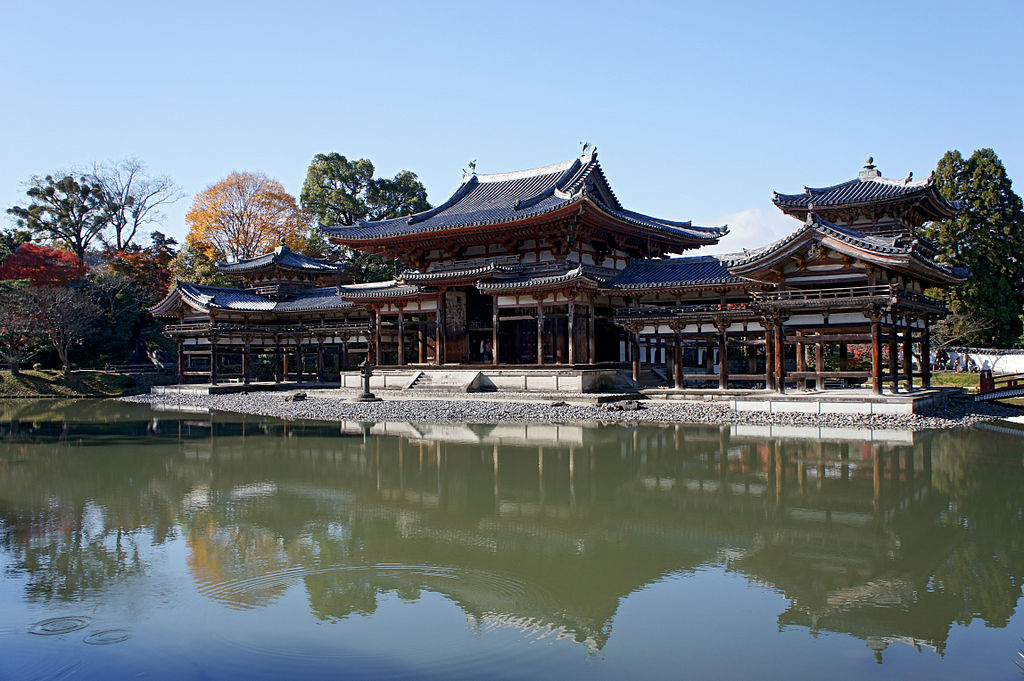
Though there may be Japanese who don’t know the name of Byodoin, but all of them know the design of 10 yen coin.
The building on the coin is Phoenix Hall of Byodoin. Byodoin was originally the villa, Uzi-den(宇治殿), belonging to the Fujziwara Michinaga(藤原道長) who was a very influential noble in Heian Period. And after his dead, his son, Fujiwara Yorimichi(藤原頼道) made it into a temple in 1052.
On that time, people believed the period had come that no one could achieve enlightenment and only the teaching of Buddha remained. It was said if they wanted to be helped and to go to the land of Perfect Bliss, they needed to believe Amida-nyorai. So the structure was named “Amida-do”(阿弥陀堂), and the Budda statue of Amida-nyorai was placed at the hall.
The reason why the hall is called Phoenix is people prize the beauty of the feature which resembles to the auspicious bird spreading the wings. Phoenix Hall has kept the figure for more than a thousand years.
[/su_spoiler]
Sponsored Links
Ninnaji temple(仁和寺)
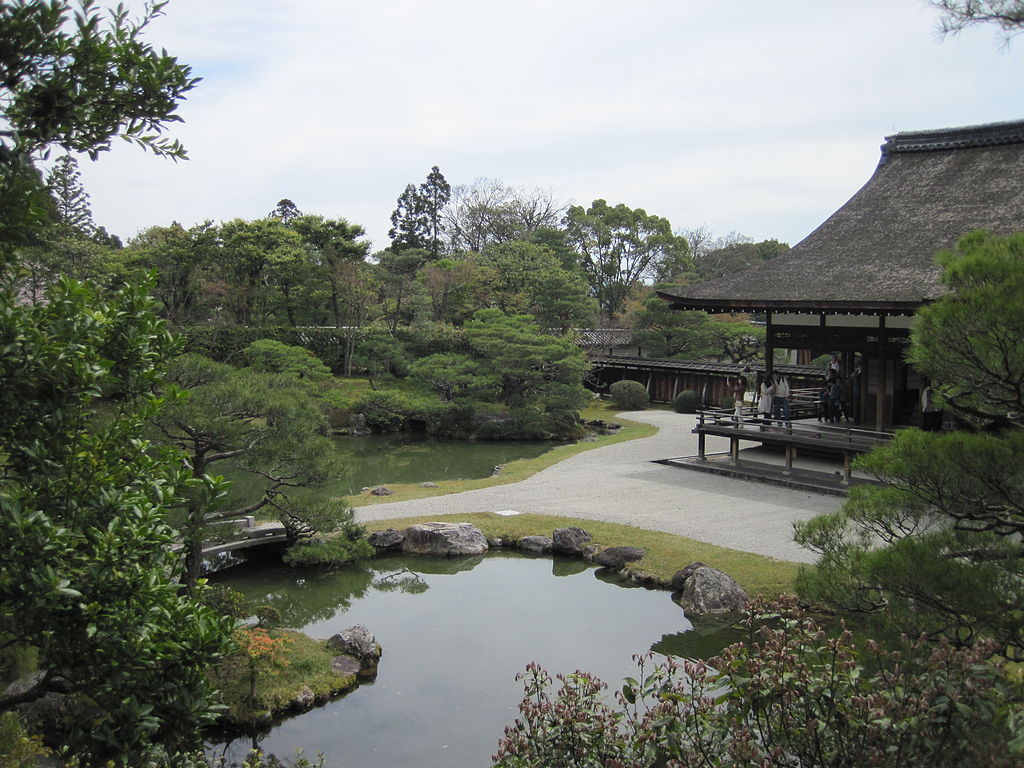
The name of Ninna is derived from an era when the temple was built. The idea of building of the temple was from Emperor Kouko(光孝天皇) and the completion was in 888 on the reign of Emperor Uda(宇多天皇) .
Since then, Ninnaji had been deeply fated to the Imperial Household until Edo Period. In “Essays in Idleness”, Yoshida Kenkou wrote about the monk of Ninnaji and criticize him.
Today, the temple is familiar to many people with the garden of the cherry blossoms and the autumn leaves. And the five-story pagoda is very popular as well as the one of the Toji. The golden hall(the structure for the main Buddha statue) was used for theImperial ceremonies and replaced in Edo Period.
Kinkakuji temple/Rokuonji temple(金閣寺/鹿苑寺)
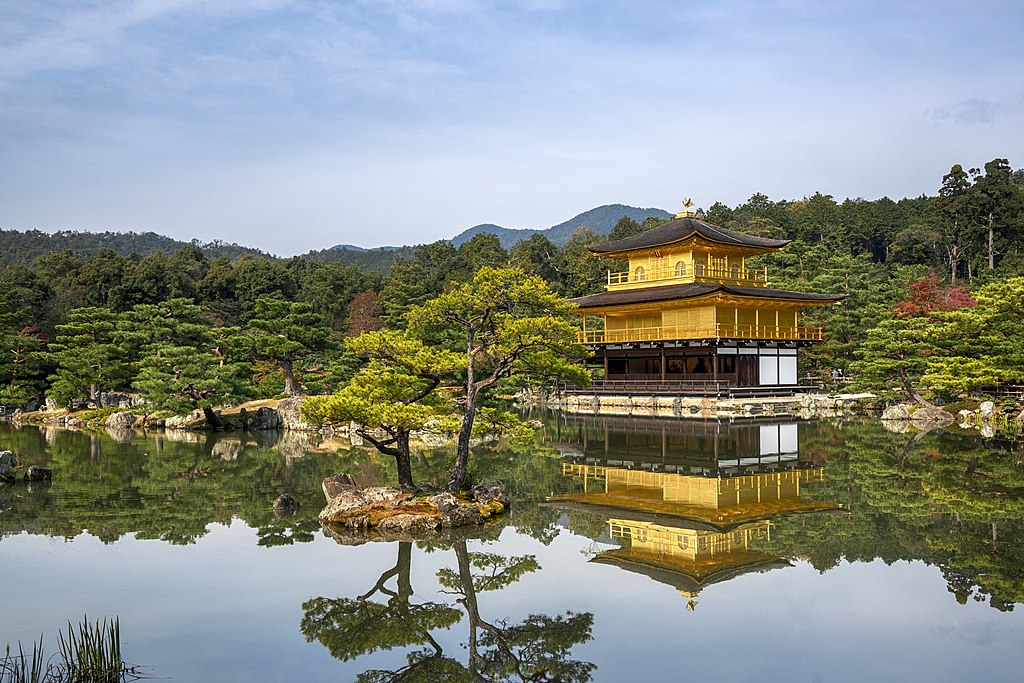
Most of Japanese call the temple as Kinkakuji because the walls, the pillars, and the Phoenix on the top are glittering with gold. But the formal name is Rokuonji. Rokuon-in is the Buddhist name of Ashikaga Yoshimitsu(足利義満) who was the third shogun of Muromachi shogunate and ordered to build the temple.
The golden structure combines three architectural forms. The form of the first story is Shinden-dzukuri(寝殿造り), the style of an architecture for a noble. The second is Buke-dzukuri(武家造り), that is for Bushi’s residence. The third is Zen sect Butsuden-dzukuri(禅宗仏殿造り), which is the way of architecture for Zen sect temple.
July 2, 1950, the young ascetic monk of the temple set fire to the structure. Not only Kinkaku, the precious Buddha statues and the sutras were wrapped in flame. After six years, Mishima Yukio(三島由紀夫) wrote “Kinkakuji” dealing with the incident.
[/su_spoiler]
Tenryuji temple(天龍寺)
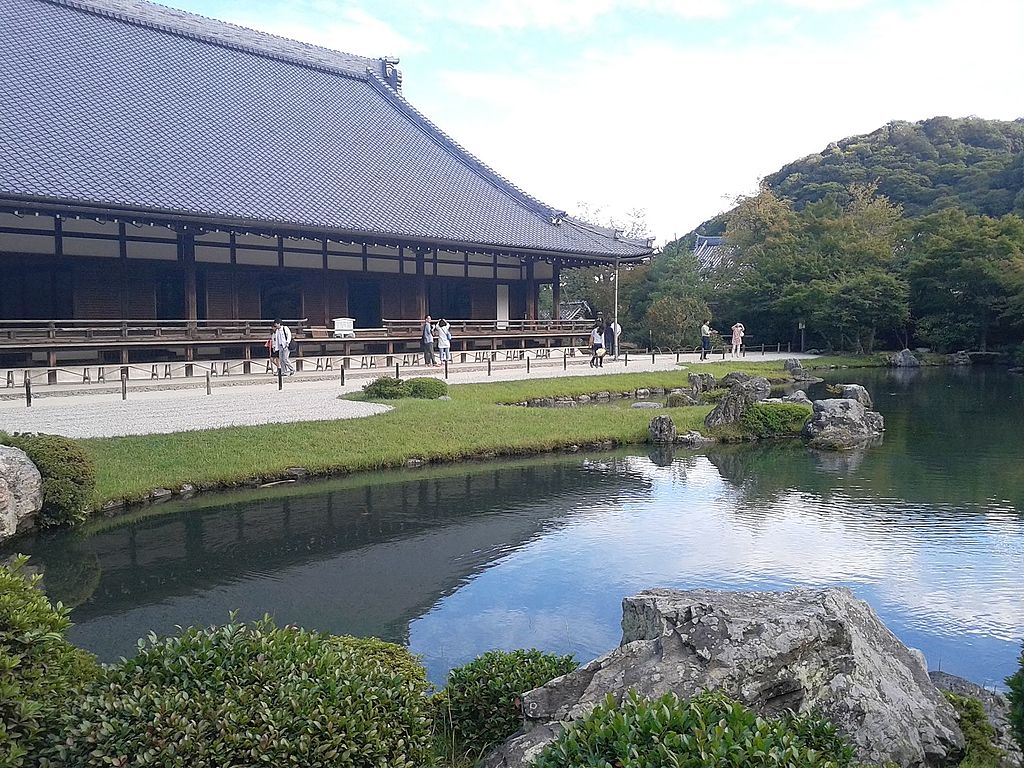
The garden of Tenryuji is one of the most popular in Kyoto and said it was designed by Muso Soseki(夢窓疎石) . In 1339, Ashikaga Takauzi(足利尊氏) , the founder of the Muromachi shogunate, asked Muso-Soseki to establish the temple for mourning his enemy, Emperor Godaigo(後醍醐天皇).
Muromachi shogunate decided Kyoto Gozan(京都五山), the five most important Rinzai temples of Kyoto, and placed Nanzenji temple higher rank than them. Tenryuji was the first rank of Kyoto Gozan.
Kyoto Gozan
- Tenryuji temple
- Shokokuji temple (相国寺)
- Kenninji temple (建仁寺)
- Tofukuji temple (東福寺)
- Manjuji temple (万寿寺)
But the eight times fires took away the fabulous halls from the temple and just the garden for what it has been. The Zen sect garden consists of the borrowed landscape, the pond, and the rock garden. It is Chisen Kaiyushiki Teien(池泉回遊式庭園), the style of garden that features a path around a pond.
Saihoji temple(西芳寺)
Kozanji temple (高山寺)
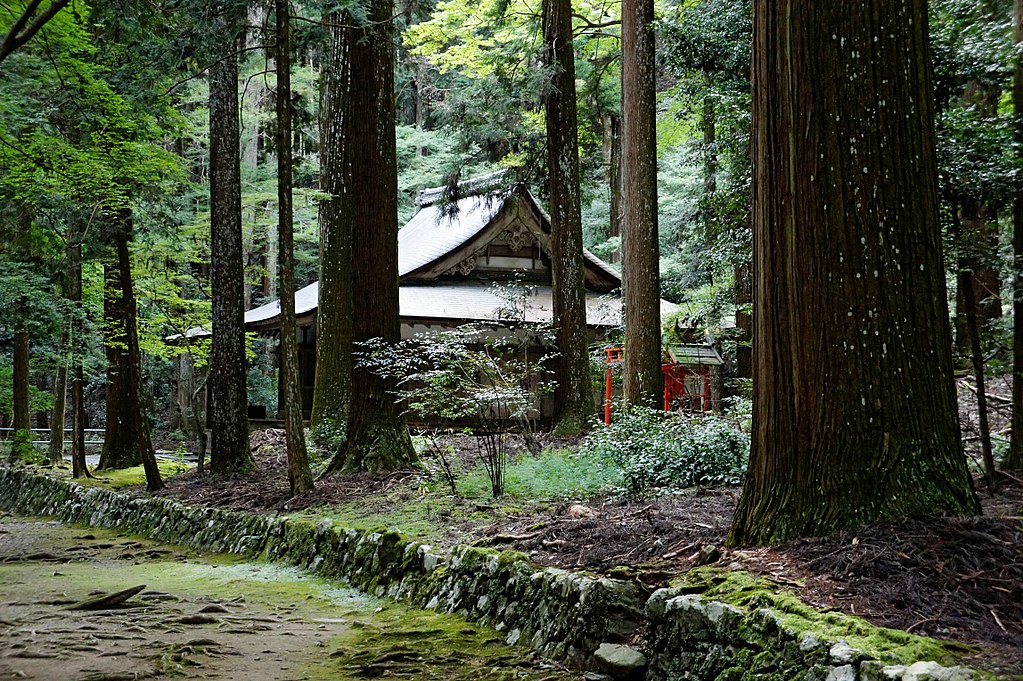
The photo shows the National treasure of Kozanzi, “Sekisui-in”(石水院). It was built in early Kamakura Period with Shinden-dzukuri.
Kozanji itself was founded in 774 and saint monk Myoe(明恵上人) reconstructed for the devotion of Emperor Gotoba(後鳥羽上皇).
The peak season of visiting Kozanji is Autumn when the leaves turn into brilliant red or yellow. The tea plantation is the oldest in Japan. And it is known as the temple of producing “Choju-giga”(鳥獣戯画)
Nishi-Honganji temple(西本願寺)
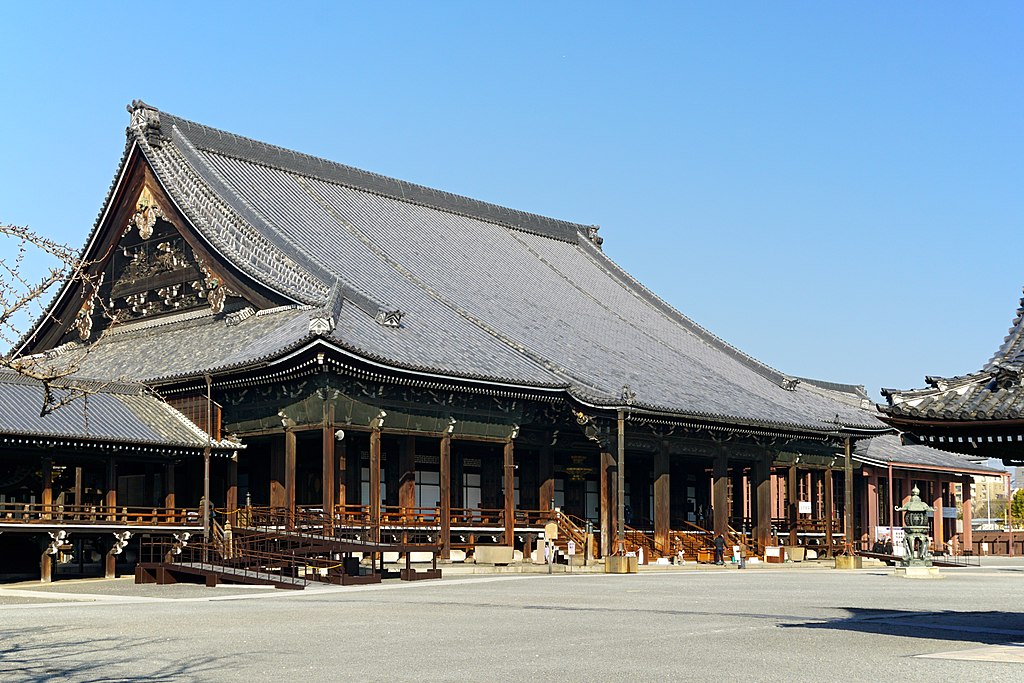
The origin of Nishi-Honganji is the Court of Shinran, who began Jodo Shin sect(浄土真宗) and died in 1263. His daughter, Kakushin-ni(覚信尼) assumed the role of caretaker of the Court and the descendants (the Ootani family, 大谷家) has inherited the chief priest until today. Nishi-Honganji represents “west part of Honganji”, so Higashi-Honganji, the eastern sect of the temple(Ootani sect), also exist in Kyoto.
In Azuchi Period, Honganji had great influence in Kinki area with many believer. Oda Nobunaga saw the temple as the obstruction for the work of unifying Japan. The war started the fire between them and continued for 11 years. At the end of the war, the opinion of the monk of Honganji was divided whether they made peace with Nobunaga or do-or-die resistance.
Nishi-Honganji was the side of peace and Higashi-Honganji was the resistance. The current chief priest of Nishi-Honganji is Sennyo(専如) and 25th. There are a lot of the structure for National treasures or Important Cultural Properties including Amida-do(阿弥陀堂), Mikage-do(御影堂), and Hiun-kaku(飛雲閣).
[/su_spoiler]Ryoanji temple(龍安寺)
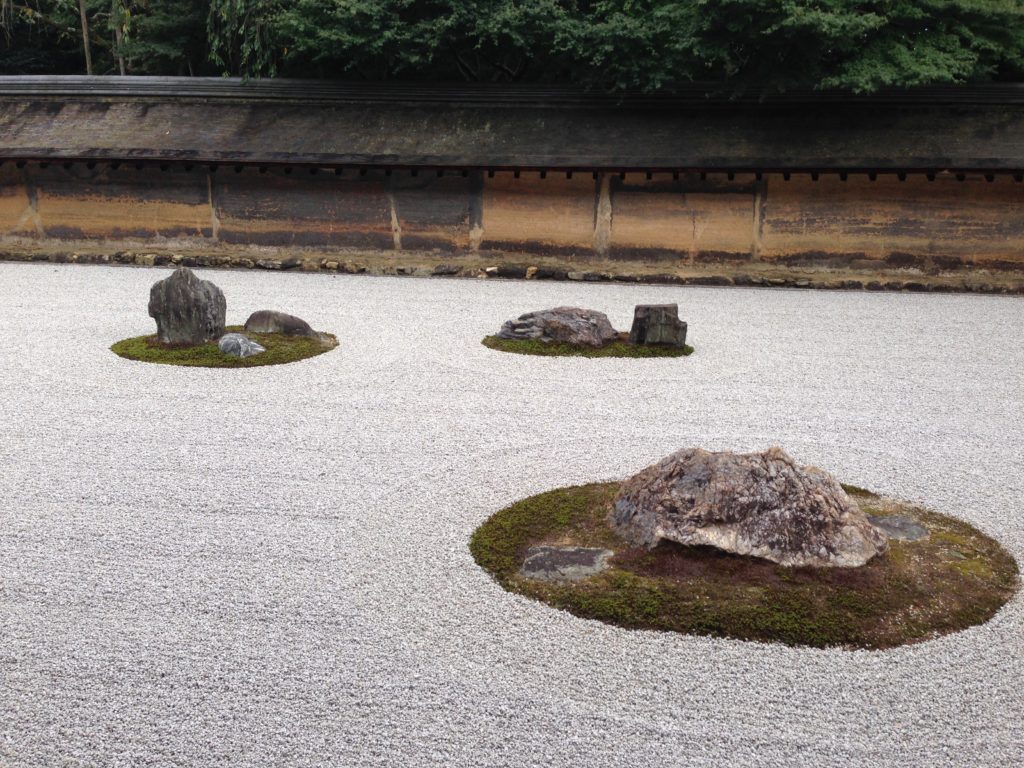
In 1450, Hosokawa Katsumoto(細川勝元), one of the powerful provincial military governor turned daimyo, received the villa from the noble of Tokudaiji and altered as a Zen sect temple.
The Hojo garden(方丈庭園) of the temple, National Site of Scenic Beauty, is representative rock garden in Japan. The length of west to east is 30 meter and north to south is 10 meter. The 15 stones are placed 5, 2, 3, 2, and 5. The arrangement is called for “Toranoko watashi(虎の子渡し, stepping stone for a child tiger).
[/su_spoiler]Ginkakuji temple/Zishoji temple(銀閣寺/慈照寺)
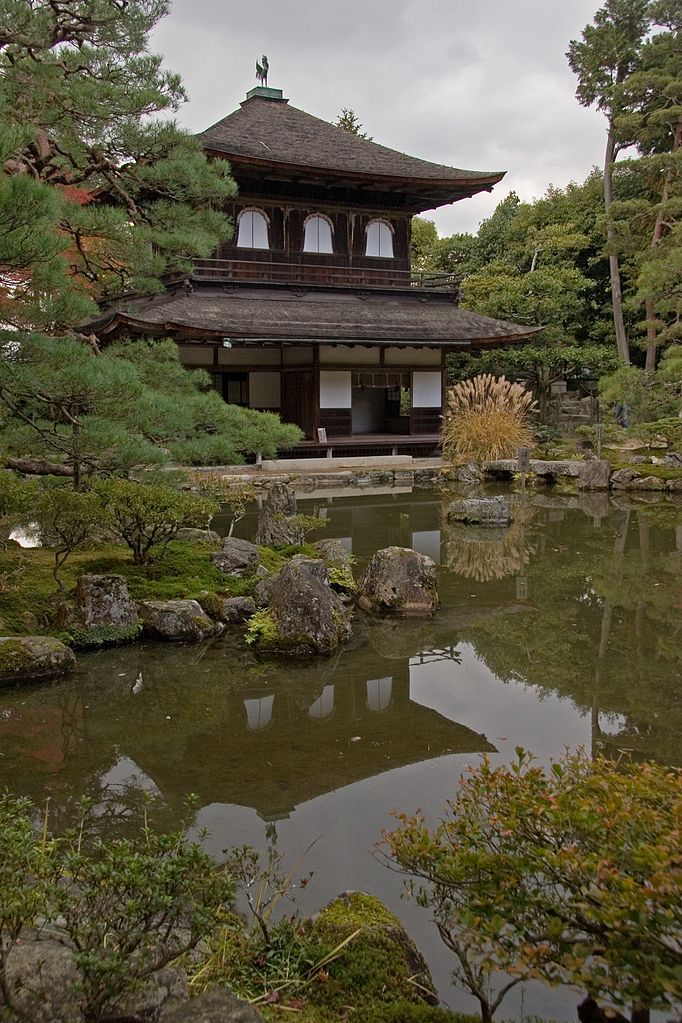
Ginkakuji was constructed by Ashikaga Yoshimasa(足利義政), the 8th shogun of Muromachi shogunate, in 1482. It was originally his mountain villa, “Higashiyama-den”(東山殿), and change into the temple after his death.
Just like Kinkakuji, Ginkakuji is the alias and the formal name is Zishoji. Gin means silver in the Japanese language, but the Kannon-den isn’t embellished with silver foil. The is considered that Muromachi shogunate faced the lack of the funds for the civil war or Yoshimasa dared to complete without silver by his aesthetic sense.
Some reserchers think the structure of Kannon-den is perfectly designed to enjoy full moon. In the garden(Chisen Kaiyushiki Teien), Ginsyatan(銀沙灘, the silver sand wave) and Kogetsu-dai(向月台, the platform toward the moon) are made of white sand.
They seem to reflect the light of the moon to the Kannon-den.
Map
Sponsored Links

